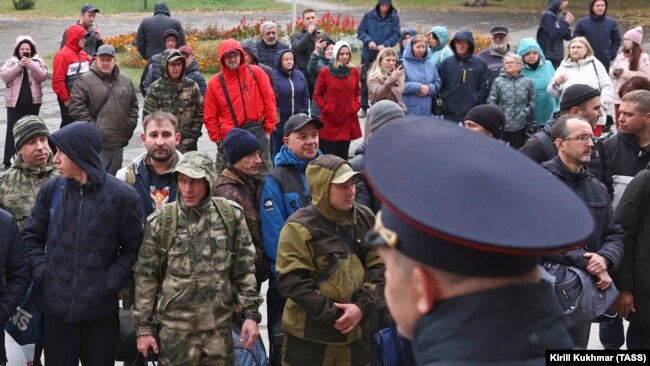RFE/RL Traffic Surges Following Kremlin’s Mobilization Announcement
Six months into Russia’s invasion of Ukraine, Ukrainian and Russian audiences are seeking out RFE/RL coverage of recent events in the war in unprecedented numbers.

WASHINGTON, D.C. – Six months into Russia’s invasion of Ukraine, Ukrainian and Russian audiences are seeking out RFE/RL coverage of recent events in the war in unprecedented numbers despite extensive Kremlin attempts to block RFE/RL’s websites and most social media platforms.
The Kremlin’s “partial mobilization” announcement and recent Russian strikes on Ukrainian cities are driving significant traffic spikes of both Russian and Ukrainian audiences. In one day (October 10), combined Facebook and YouTube views of RFE/RL’s Russian-language platform Current Time videos exceeded 17 million. RFE/RL videos documenting the reality of, and opposition to, the Kremlin’s draft have been the top video on Russian YouTube at multiple points since conscription was announced, accounting for the largest peak in the company’s Russian-language traffic since the war began. In the seven days after mobilization was announced on September 21, YouTube views from Russia averaged nearly 17 million per day. To reach RFE/RL’s news and reporting, Russian audiences are using circumvention tools in larger numbers than ever before.
Current Time experienced a 401% increase in website traffic in September 2022 compared to the same month in 2021, while visits to the Russian Service website increased by 40%. Video views of RFE/RL content from inside Russia on YouTube increased 529% in the same period. Since the start of the war on February 24, 2022, Russia-based audiences have viewed RFE/RL videos 1.5 billion times on YouTube.
“It is apparent that more and more Russians are hungry for factual information about the war and its consequences for Russia,” said RFE/RL President and CEO Jamie Fly. “Not only does our sharp increase in traffic indicate we are successfully circumventing Russian censorship, but that Russians are desperate to learn what is really going on. They trust the news they get from us.” RFE/RL reaches Russian-speaking audiences through the Russian Service, Current Time, the Tatar-Bashkir Service, and local news websites North.Realities, Siberia.Realities, Idel.Realities, Crimea.Realities, and Donbas.Realities.
With the support of the Open Technology Fund, RFE/RL is employing state of the art circumvention technologies to allow Russians to access independent media and the wider Internet, promoting the use of free and effective VPNs. RFE/RL is also using mirror sites, community messaging through Viber and Telegram, and Tor for safe and anonymous browsing. Combined, these tools are successfully allowing audiences – both new and loyal users – to access factual information about atrocities in Ukraine, conscription, and more.
Since Russia’s invasion of Ukraine, Kremlin officials have blocked 14 RFE/RL Russian-language websites and initiated bankruptcy proceedings against the company’s Russian legal entity. These actions were the latest in a string of attacks on independent media beginning when Putin came to power in 2000. Russian authorities subsequently designated RFE/RL entities and 30 journalists “foreign agents,” imposing over $17 million in fines against the company for refusal to censor content and comply with “foreign agent” labelling requirements.
For more information, contact press@rferl.org.